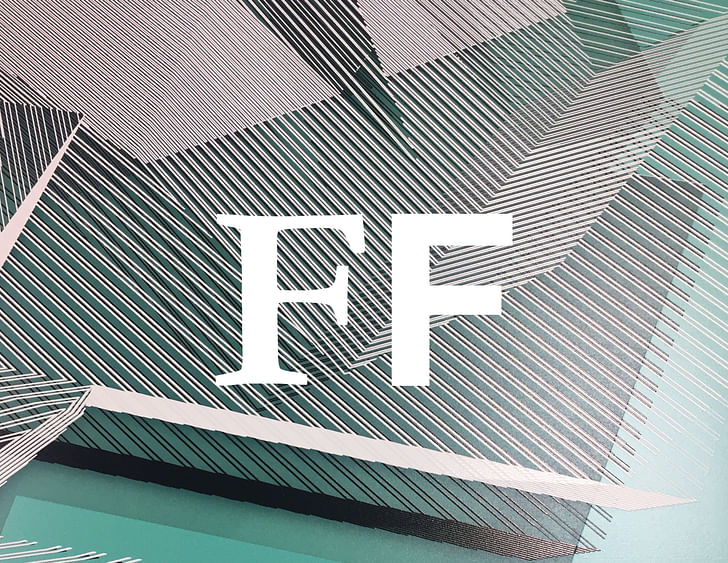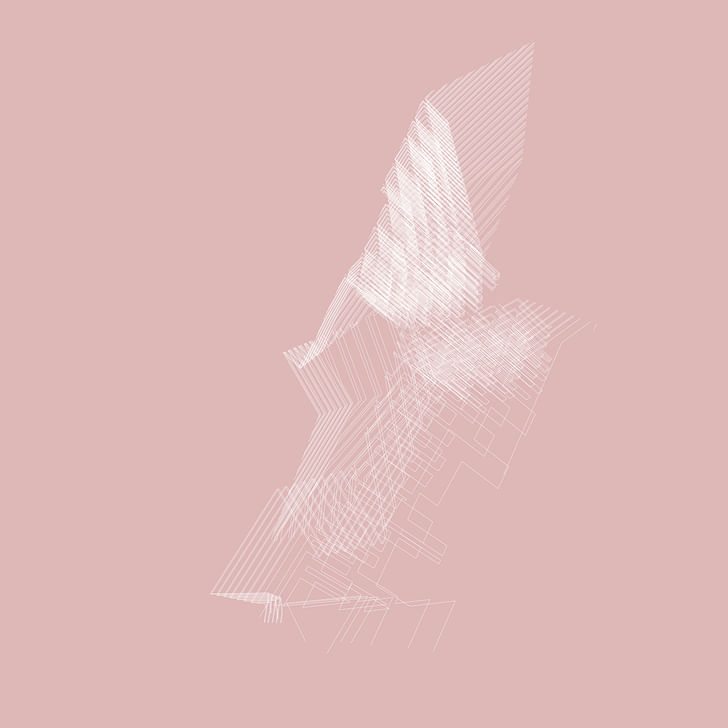

Fellow Fellows is a series that focuses on the current eruption of fellowships in academia today. Within this realm, these positions produce a fantastic blend of practice, research, and design influence, traditionally done within a tight time-frame. Fellow Fellows sits down with these fellows and attempts to understand what these positions offer to both the participants and the discipline at large. It is about bringing attention and inquiry to the otherwise maddening pace of revolving academics while giving a broad view of the breakthrough work being done by those who exist in-between the newly minted graduate and the licensed associate.
This week, we are talking to Viola Ago. Viola was the William Muschenheim Fellow during the 2016-2017 academic year at the University of Michigan’s Taubman College of Architecture and Urban Planning.
1. The conversation, focus and applications to fellowships in general has exploded over the past decade. They have become a go-to means of exposure and legitimization within the academy and in some respects, the HOV lane of historically PhD owned territories of research and publication. What are your views on the current standing of fellowships as a vehicle of conceptual exploration?
I do agree that there is certain academic currency packaged with fellowships in general. The process of acquiring one is, to my knowledge, similar to acquiring a tenure-track position. Fellows are typically brought in from a national search; I think this may be how a fellow’s academic currency appreciates by default.
However valuable my experience was, there came a point where I wanted to focus more on producing my own work and understand how it could integrate with the discipline in a productive way.
The objective of the fellowship program varies depending on the school, program, endowment, and I would even argue that it changes slightly from year to year. While I do think of fellowships as a platform for exploration, I think the type and manner in which the research (conceptual, design, technology, etc.) is conducted depends on the individual and their project.
2. What fellowship where you in and what brought you to that fellowship?
I was the William Muschenheim Fellow during the 2016-2017 academic year at the University of Michigan’s Taubman College of Architecture and Urban Planning. My route to the fellowship is a little bit strange. Originally (while I was planning my graduate studies), I had not intended for an academic appointment to be my full-time occupation. I went to graduate school with the purpose of commencing a portfolio that would help me land my dream job—a design-oriented position in a design-oriented firm. My SCI-Arc education did that, and more. Once I graduated, I started working at Morphosis Architects in Culver City. Within a few months, I was an integral part of their Advanced Technology team focusing on designing facades and atrium spaces. I consider my experience at Morphosis as an extension of my education, as Thom really does run the practice like a studio. I am lucky to say that 20-30% of my time there was dedicated to R&D. However valuable my experience was, there came a point where I wanted to focus more on producing my own work and understand how it could integrate with the discipline in a productive way. Without making this too biographical, it was at this point that I decided to apply for the Muschenheim Fellowship.
3. What was the focus of the fellowship research?
My fellowship work was a continuation of my obsession at the time with linework and how linework — or, in other words, vector-based information — which is typically related to the practice of drawing, could start to relate to the practice of rendering. Further, I was interested in printing processes and the possibilities offered by the physical production of drawings and the premise of these possibilities as they integrated with the tectonics of the digital file. Lastly, I used drawing as a tool to communicate compositions focused on motion, or the illusion of motion of primitives on a drawing plane.
The fellowship was a gateway to the university’s support system. In this short amount of time, I have written a few articles, participated in conferences and panels in and outside of the school, participated in exhibitions, built a couple of small-scale projects, and started a few more projects, currently underway.
At the same time, I was also rigorously reading new work and revisiting old pieces that related to the disciplines and practices of painting, printmaking, color, drawing, and technique. I spent a considerable amount of my time questioning the premise under which my work related to the disciplinary conversation in architecture.
4. What did you produce? Teach? And or exhibit during that time?
I produced a series of digital and physical drawings, models, and a book that confronted the line and its information-based translations from 3D to 2D (projection techniques), and from digital to physical (printing techniques). These were all part of the exhibition that opened on March 8, 2017, at the Taubman College Gallery with my fellow fellows Hans Tursack and Erik Herrmann. The fellowship was also accompanied by a short presentation meant to discuss the work in the exhibition (this is available on the Taubman College Vimeo page).
5. How has the fellowship advanced or become a platform for your academic and professional career?
It is still early for me to evaluate the advancement that the fellowship has afforded (up to this moment, I have been teaching for under two years). However, I can say the unique environment that the fellowship provided has been crucial in the development of my project. The fellowship was a gateway to the university’s support system. In this short amount of time, I have written a few articles, participated in conferences and panels in and outside of the school, participated in exhibitions, built a couple of small-scale projects, and started a few more projects, currently underway. I imagine that these components will be critical to the advancement of my career over the next few years.
6. What is the pedagogical role of the fellowship and how does it find its way into the focus and vision of the institution that you worked with?
The environment of an academic institution is volatile—especially one as large as Taubman College. Each year, the profile of the selected fellows seems to be related in some way to the projects and dynamics of the school at that particular time. I think the fellowship helps to bring in different ideas and conversations from other traditions to already well-established institutions. (I believe this is particularly the case with schools which are not located on the coasts.)
7. There is some criticism that a fellowship is a cost effective way for institutions to appropriate potent ideas while leaving the fellow with little compensation besides the year of residence and no guarantee of a permanent position? What is your position on this?
At the moment I do not hold the same criticism. The support that I have received from the university is worth the precariousness of a short-term appointment. I have received vital mentorship and support from my program chair Sharon Haar, associate professor John McMorrough, our associate dean of research Geoff Thun, associate professor Kathy Velikov, more recently our newly appointed dean Jonathan Massey, and other amazing faculty and colleagues. Further, the fellowship granted me access to the facilities available to not only Taubman College, but the University of Michigan as well. This includes the FABLab and all of its machines, the cutting-edge computer labs and the latest software packages across the entire university campus, the library resources, and different teams of staff (internal and external) that assist in acquiring grants, funding, sponsorship, and more.
Further, the fellowship granted me access to the facilities available to not only Taubman College, but the University of Michigan as well.
Lastly, there is additional financial support available (outside of the allocated fellowship project award). These opportunities are offered through the college as well as the university. In fact, some grants are specifically designed to support non-tenure-track instructors such as fellows and lecturers.
8. What support, and or resources does a fellowship supply that would be hard to come by in any other position? Why would you pursue a fellowship instead of a full time position?
Personally, I like to embed myself in the environment that I am in. When I transition from one place to the next, I try to adapt quickly, as that is the most effective way of gaining the most valuable experience. When I was at Morphosis, I was fully immersed in Thom’s project; I was feeding off the energy of the practice and what it offered. Similarly, when I came to Taubman, I engaged with the system and the pedagogy such that I was able to fully preoccupy myself with my research and my architectural project. As a result, my project has advanced tremendously. While I was at Morphosis, I was not able to do that (although I think there are some people who can make the office-job/personal project work for them).
Further, the fellowship program typically gives you a course release, and does not require any other type of academic service. This arrangement is quite beneficial when one is intensively focused on one’s work.
9. What was your next step after the fellowship?
After the fellowship, I wanted to start working on a new project. There is a lot of momentum and force that is gained during the fellowship program—it would be unfortunate to not capitalize on it. Hans Tursack and I started working together on some ideas just a couple of weeks after our Feedback fellows exhibition opening. We came to the realization that there was significant overlap in our interests in architecture so we started putting a design proposal together and sought out funding opportunities.

10. What are you working on now and how is it tied to the work done during the fellowship?
I am working on a few projects, some writing ones and some design ones, some with one of my collaborators, Hans Tursack, and some individually. The most important project at the moment, however, is a continuation of Thick Skin, a small-scale installation that Hans and I put together in the Island space at the A+D (Architecture and Design) Museum in Los Angeles in March of this year. Thick Skin is the beginning of a larger project; one that is interested in the correspondence between graphics, and our contemporary visual culture.
11. What advice would you have for prospective fellowship applicants?
Reading Fellow Fellows is an informative way to begin understanding the overall picture, in addition to reaching out to the colleges for more information. I would also recommend looking at the previous fellows’ trajectories to see if they align with your own. And then apply, gain experience, and apply again. As I mentioned before, the profile of the fellowship search varies from one year to the next. For this reason, I would encourage applicants to continue applying even if they did not get shortlisted the first time around.
Anthony Morey is a Los Angeles based designer, curator, educator, and lecturer of experimental methods of art, design and architectural biases. Morey concentrates in the formulation and fostering of new modes of disciplinary engagement, public dissemination, and cultural cultivation. Morey is the ...
No Comments
Block this user
Are you sure you want to block this user and hide all related comments throughout the site?
Archinect
This is your first comment on Archinect. Your comment will be visible once approved.